How to Connect Facebook Messenger as Data Destination

The integration will allow you to send messages to Facebook Messenger based on data from other systems. For example, if a new row appears in Google Sheets, an order in CRM moved to another stage of the funnel, or when a new order appears on your site, an message will be automatically sent to the specified recipient ID. This will allow you to automate the process of sending messages as efficiently as possible and save a lot of time.
Let's walk through the entire Facebook Messenger setup steps together!
Navigation:
1. What will integration with Facebook Messenger do?
2. How to connect Facebook Messenger account to ApiX-Drive?
3. How can I setup data transfer to Facebook Messenger in the selected action?
4. An example of the data that will be sent to your Facebook Messenger.
5. Auto-update and update interval.
Answers to frequently asked questions:
1. The page you want is not in the list?
To do this, click "Start Configuring Data Destination".
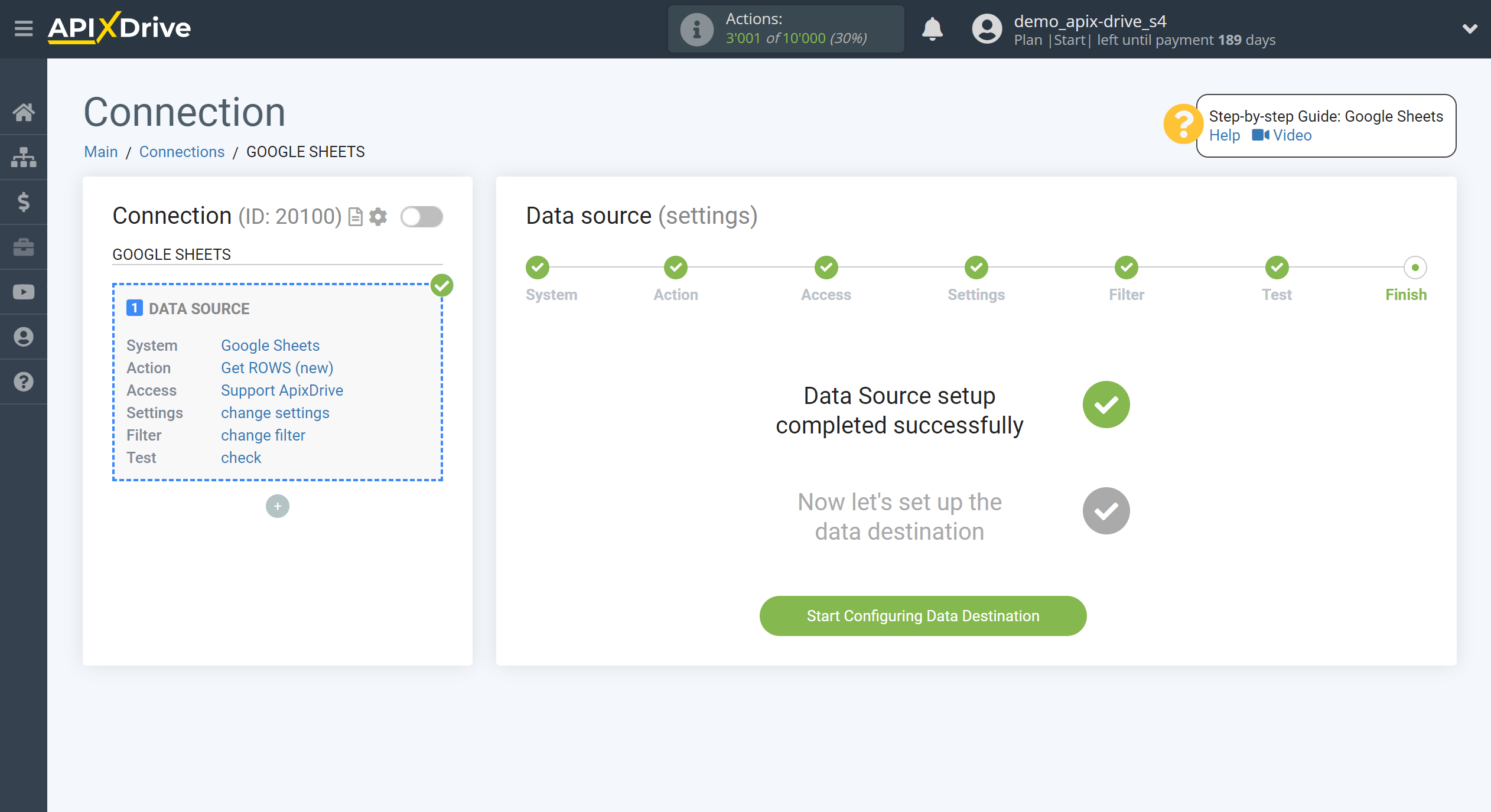
Select the system as Data Destination. In this case, you must specify Facebook Messenger.
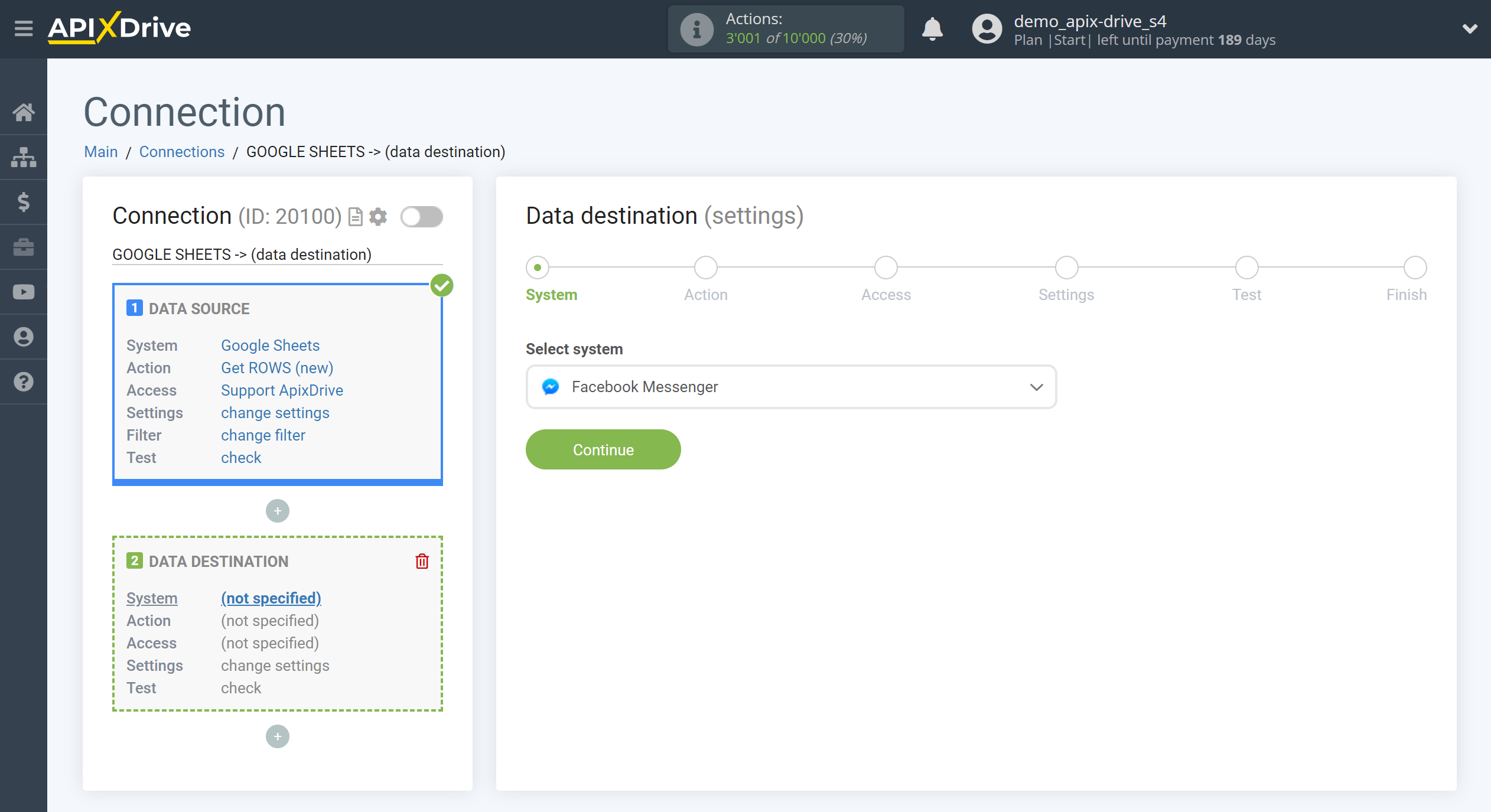
Next, you need to specify the action "Send MESSAGE" - messages wiil send to your Facebook Messenger account that appear after setup the connection and starting auto-update.
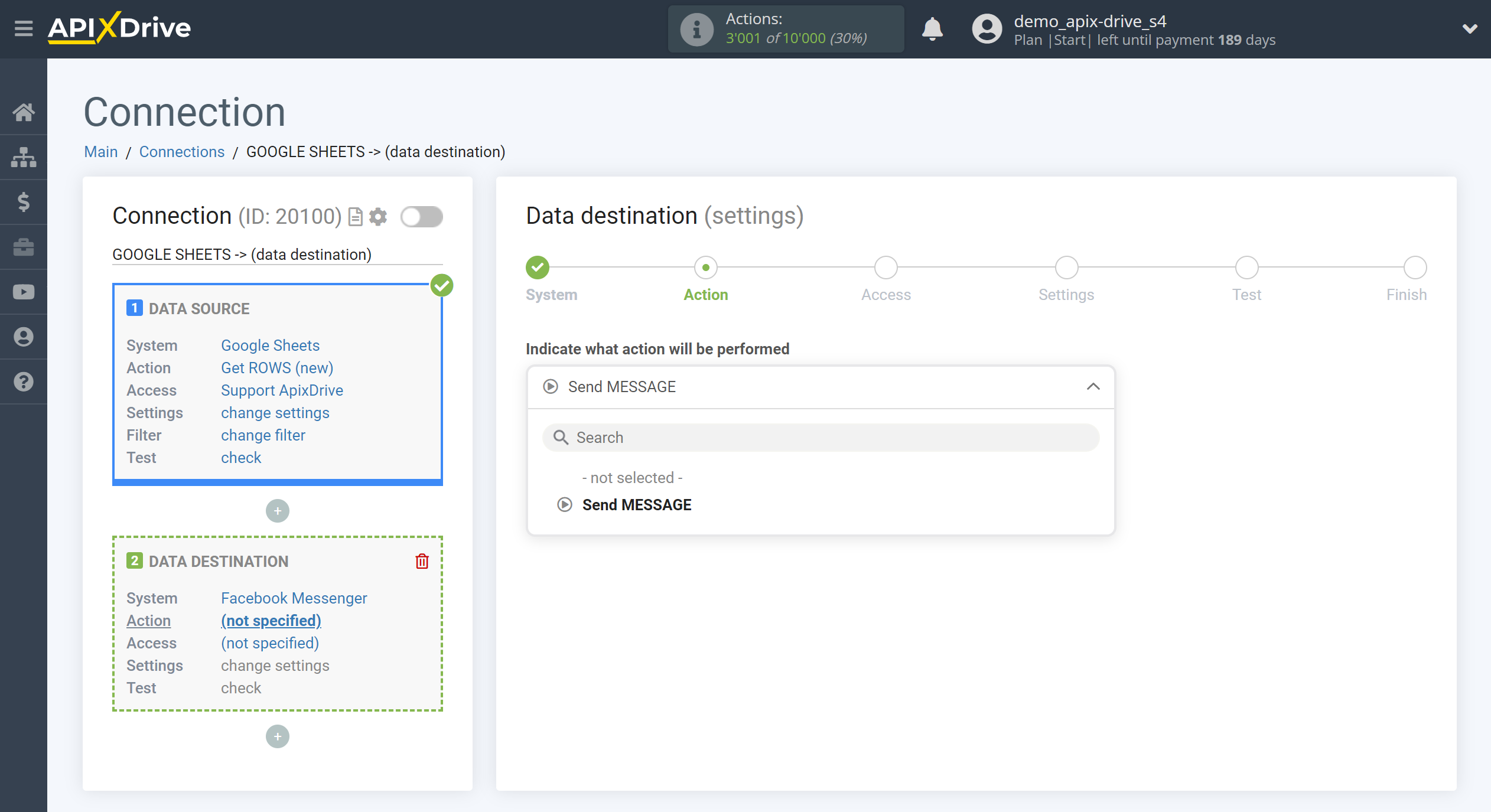
The next step is to select the Facebook Messenger account to which the data will be send.
If there are no accounts connected to the system, click "Connect account".
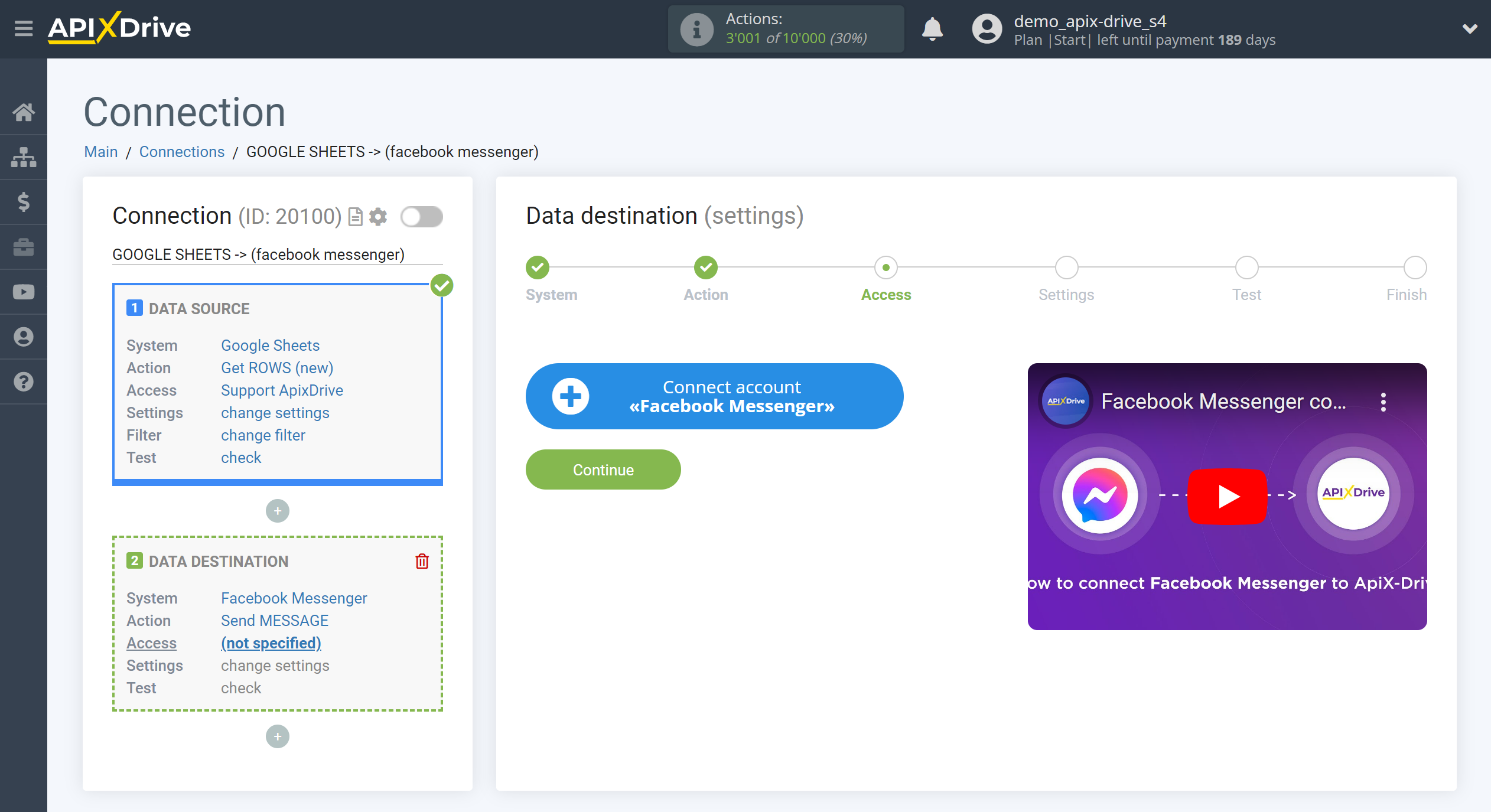
Give your permission to ApiX-Drive to work with this account.
Click "Change settings" and check the boxes to access the pages you need.
We recommend that you give access to all available pages at once in order to be able to work with them and send messages in the future.
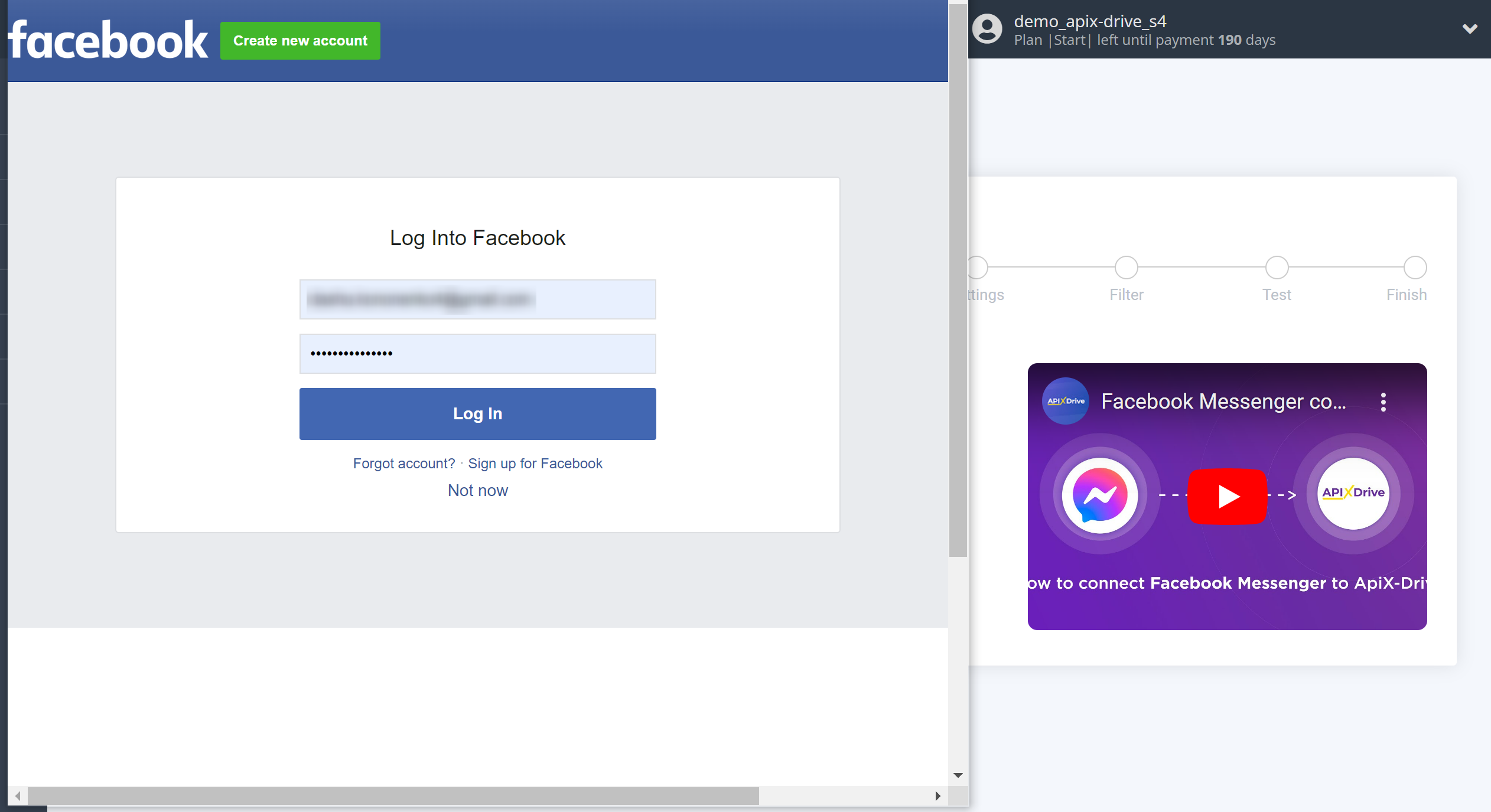
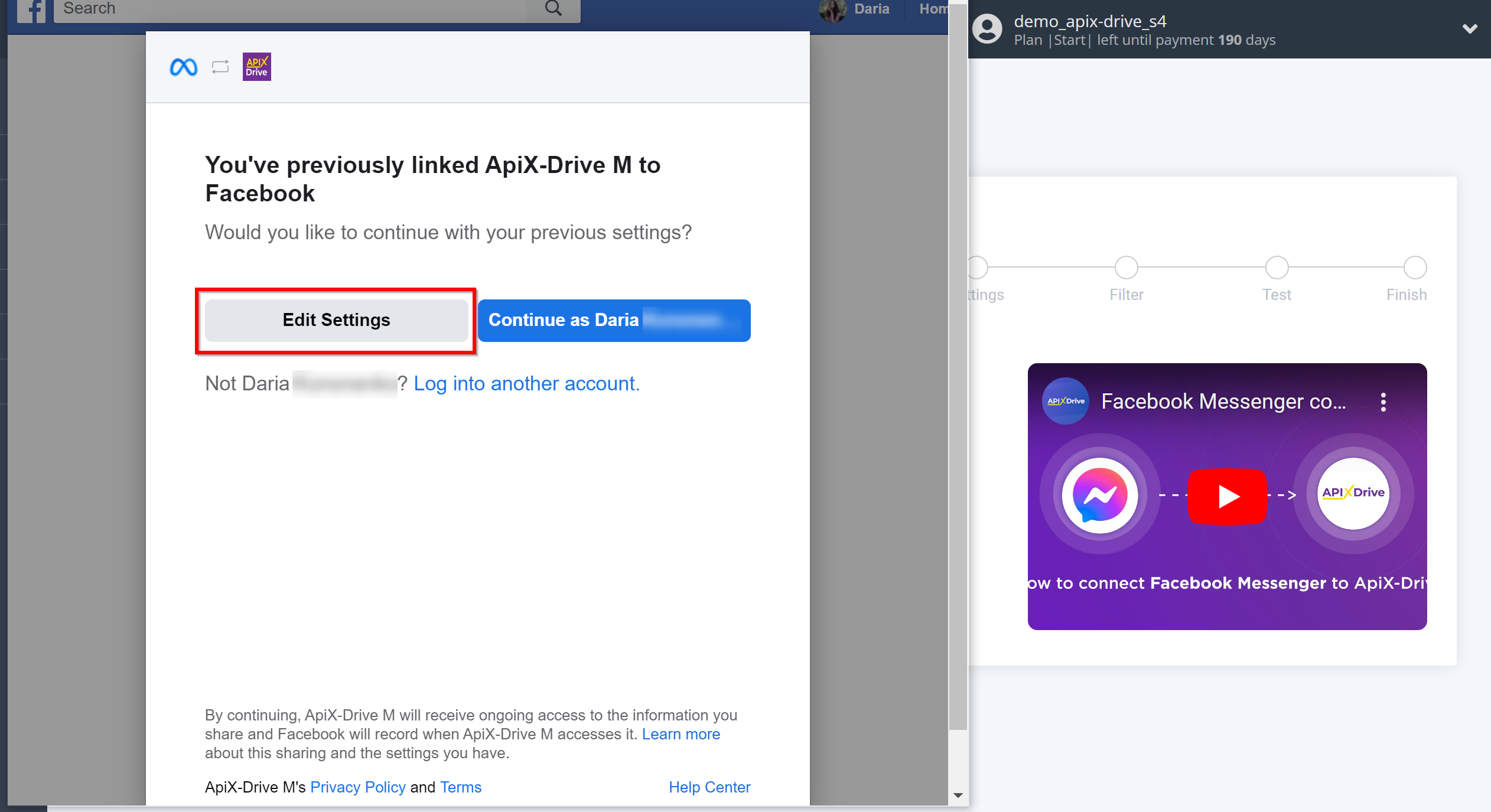
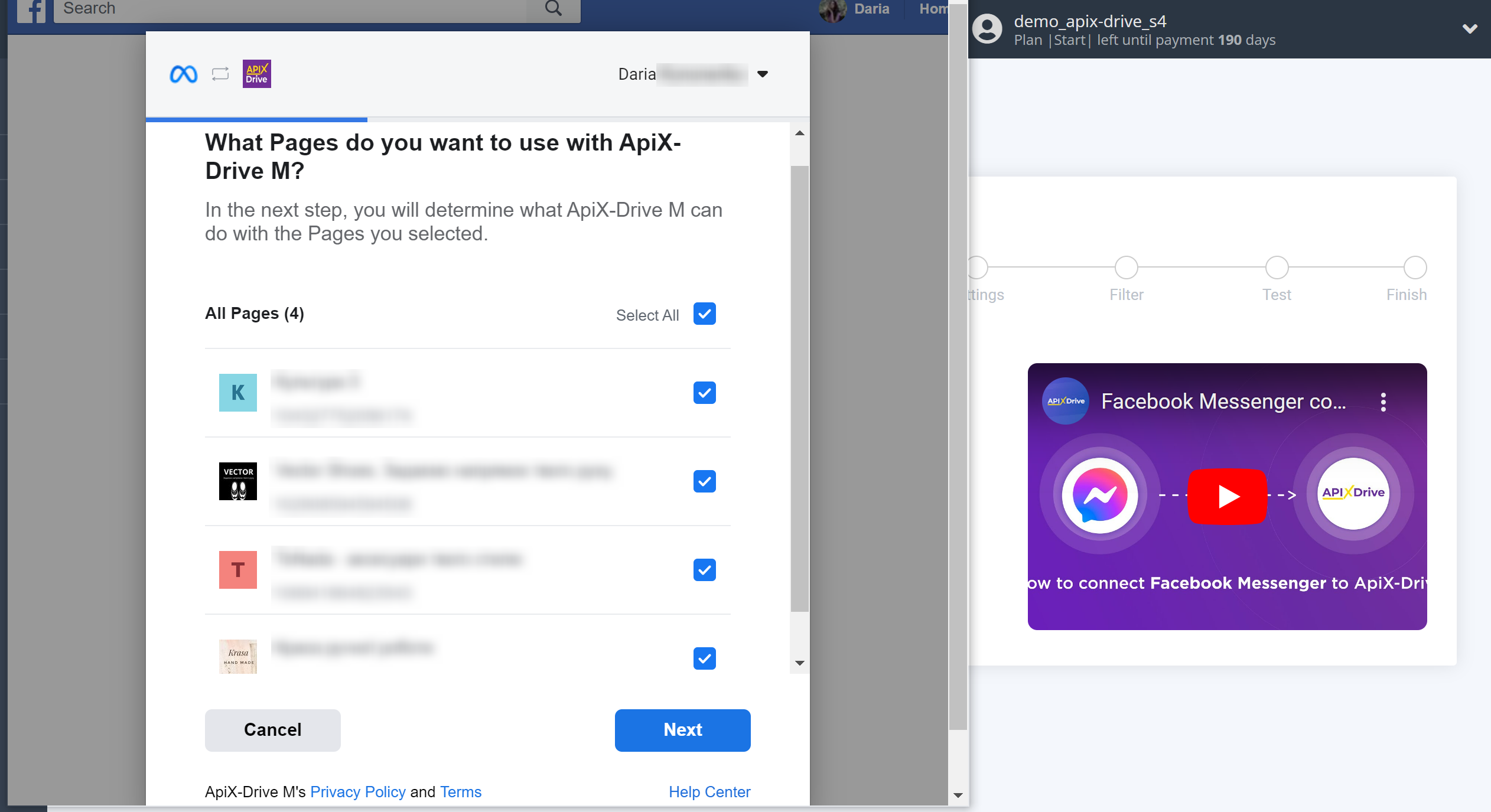
Leave all access settings checked.

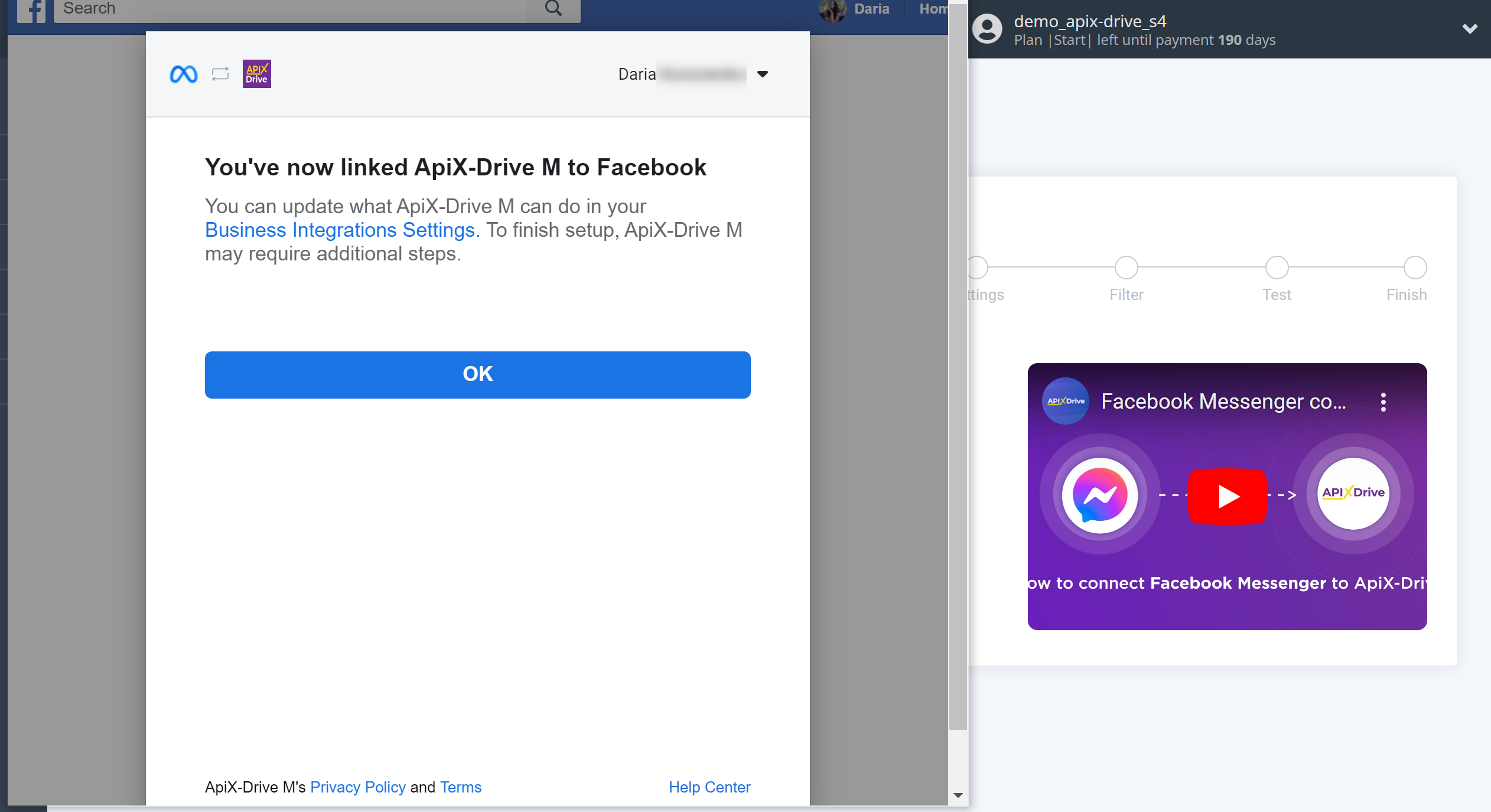
When the connected account is displayed in the "active accounts" list, select it for further work.
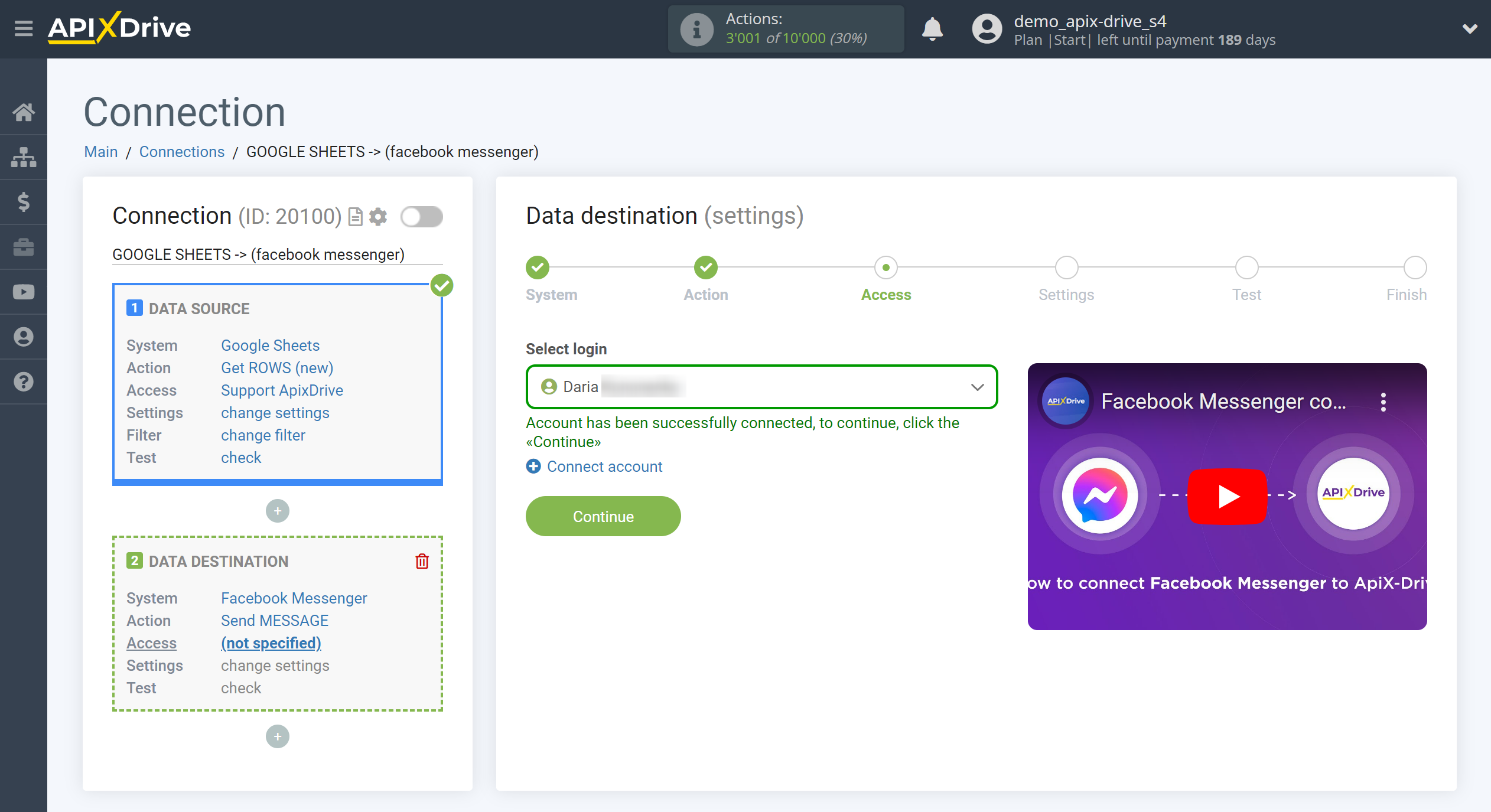
Note! If the required page is not in the drop-down list, or after connecting the account you have access to new pages, you will need to connect your Facebook account again.
To do this, follow these steps:
1. Check for admin access to the required pages.
2. Go to Access - Messengers - Facebook Messenger and delete the connected account.
3. Go to the main page and turn off auto-update link.
4. Go to the connection to the stage Access to Facebook Messenger Data Destination and connect your account, click on "Change settings" in the window that appears and check all the pages you have. If the window does not appear, and your account is picked up from the browser automatically, then repeat steps 1-2 by logging in to the browser through incognito mode.
5. Go to the Settings step in the Data Destination section and configure it again.
6. If you have created other connections with Facebook Messenger, then you need to go to these connections to the Access stage in the Data Destination, select the connected account and reconfigure the Data Destination.
Now you need to select the page in which the message will be sent and select the type of message.
You also need to specify the field where the recipient's ID (Page Scoped User ID) will be taken from.
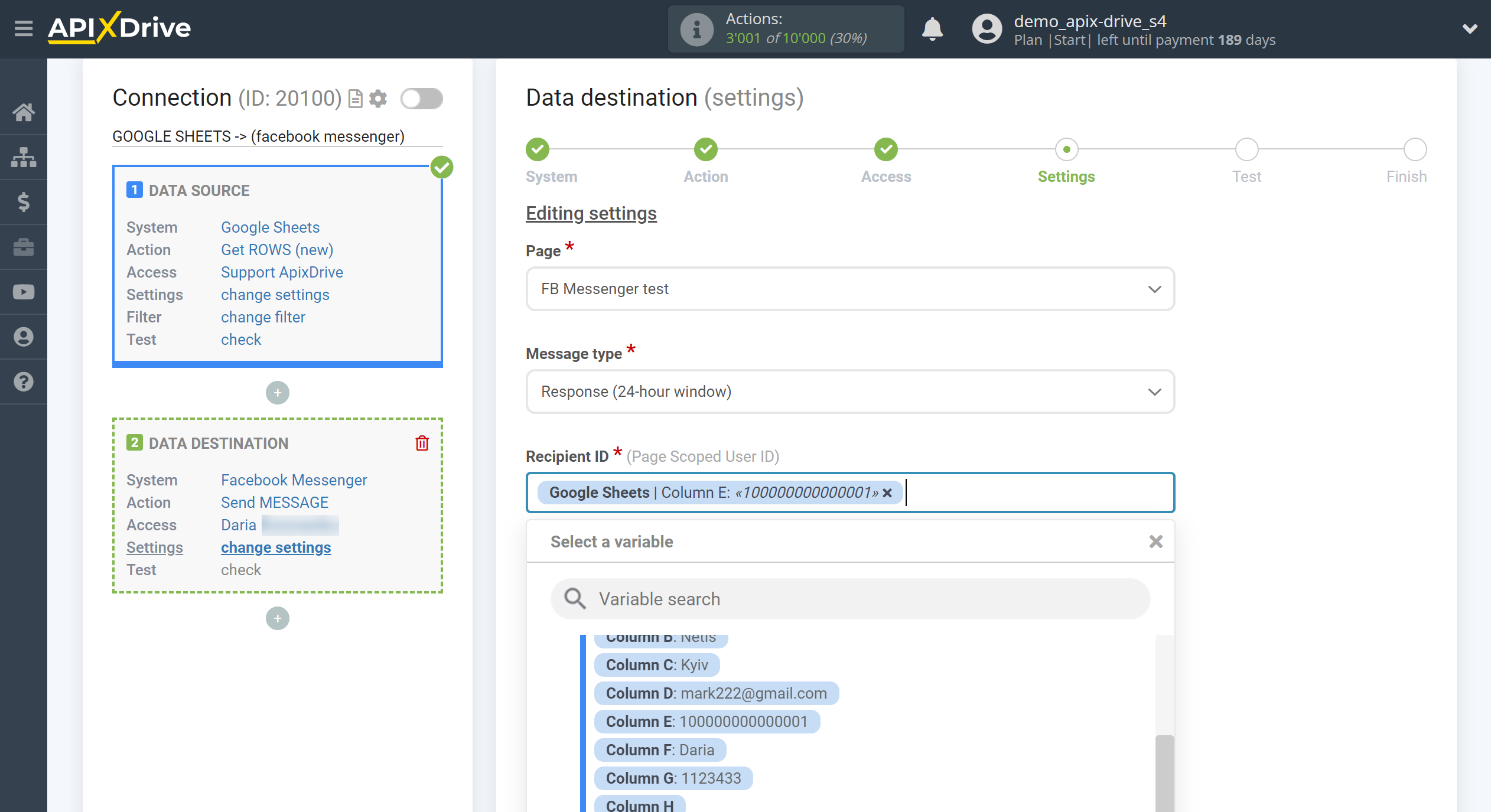
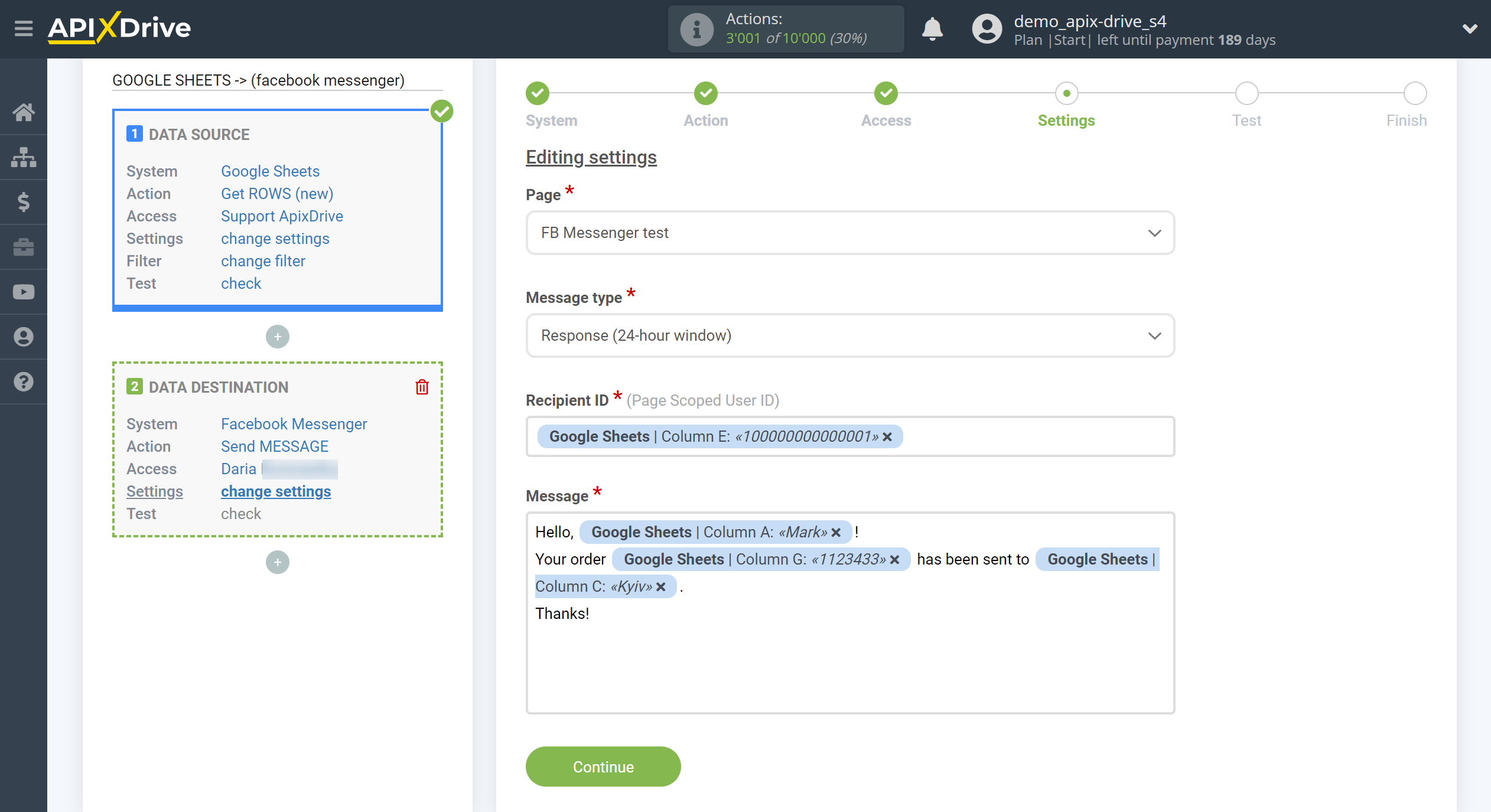
In the "Message" field, you can use both system variables such as time, date, year, month, day, and variables from the data source system. In this case, Google Sheets. By selecting variables, you will be able to see what data is in the Google Sheets fields.
You can combine these variables in any way you like. For example, manually write the text and add the order number from the Google Sheets column.
Now you can see how the future message will look like, according to the selected data.
Click "Send test data to Facebook Messenger" and a message will be sent to the user ID specified in the test data.
If something does not suit you - click "Edit" and go back one step.
If everything suits you, click "Next" to continue the setup.

This completes the Data Destination system setup!
Now you can start choosing the update interval and enabling auto-update.
To do this, click "Enable auto-update".
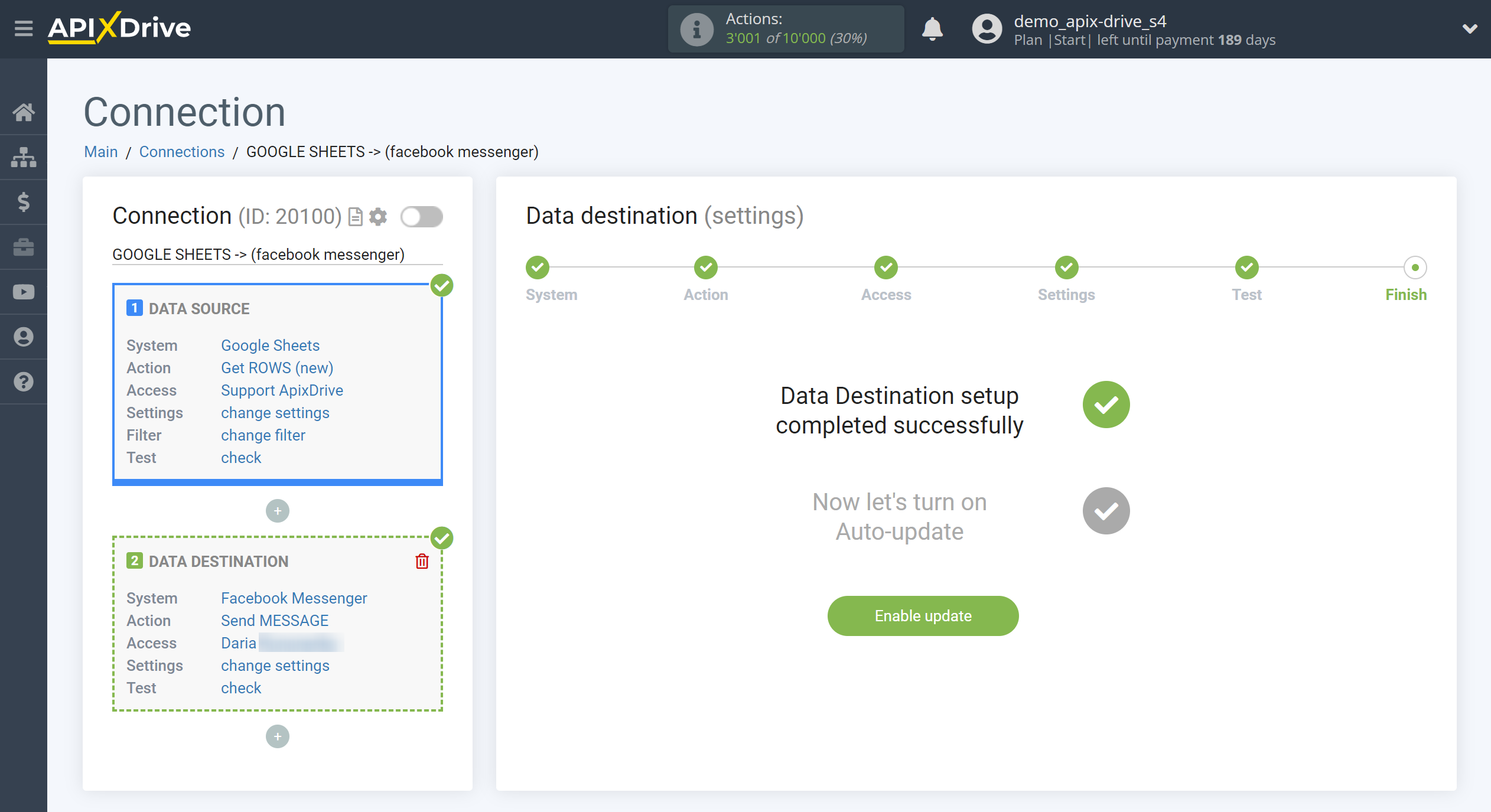
On the main screen, click on the gear icon to select the required update interval or setup scheduled launch. To start the connection by time, select scheduled start and specify the desired time for the connection update will be started, or add several options at once when you need the connection will be started.
Attention! In order for the scheduled run to work at the specified time, the interval between the current time and the specified time must be more than 5 minutes. For example, you select the time 12:10 and the current time is 12:08 - in this case, the automatic update of the connection will occur at 12:10 the next day. If you select the time 12:20 and the current time is 12:13 - the auto-update of the connection will work today and then every day at 12:20.
To make the current connection transmit data only after another connection, check the box "Update connection only after start other connection" and specify the connection after which the current connection will be started.


To enable auto-update, switch the slider to the position as shown in the picture.
To perform a one-time data transfer, click on the arrow icon.
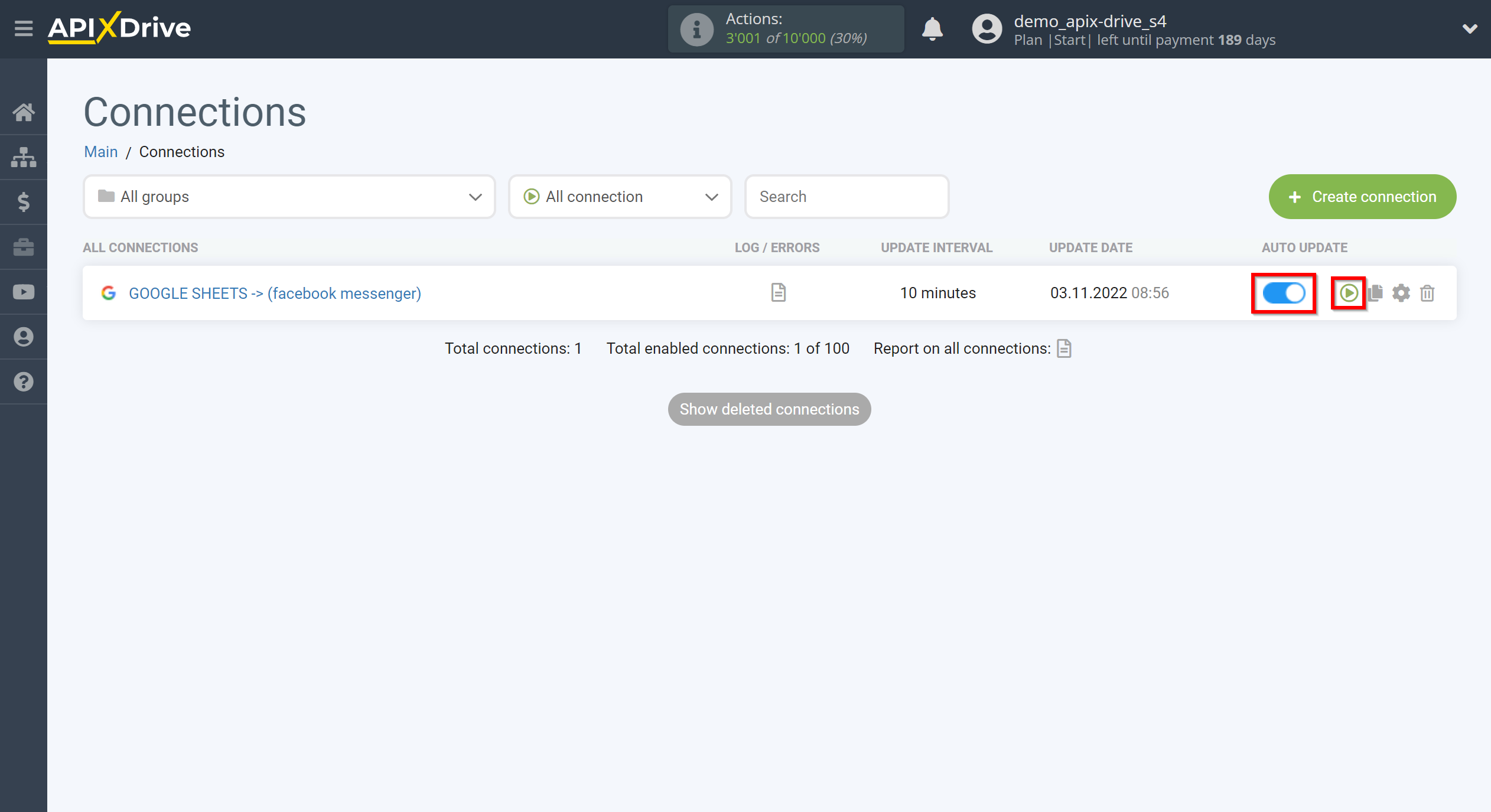
This completes setup Facebook Messenger as Data Destination! See how easy it is!?
Now don't worry, ApiX-Drive will do everything on its own!